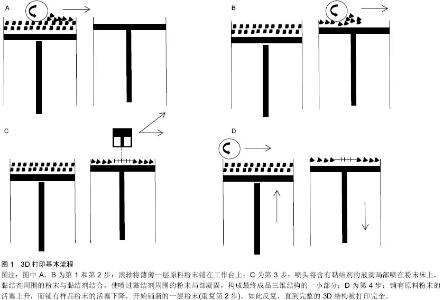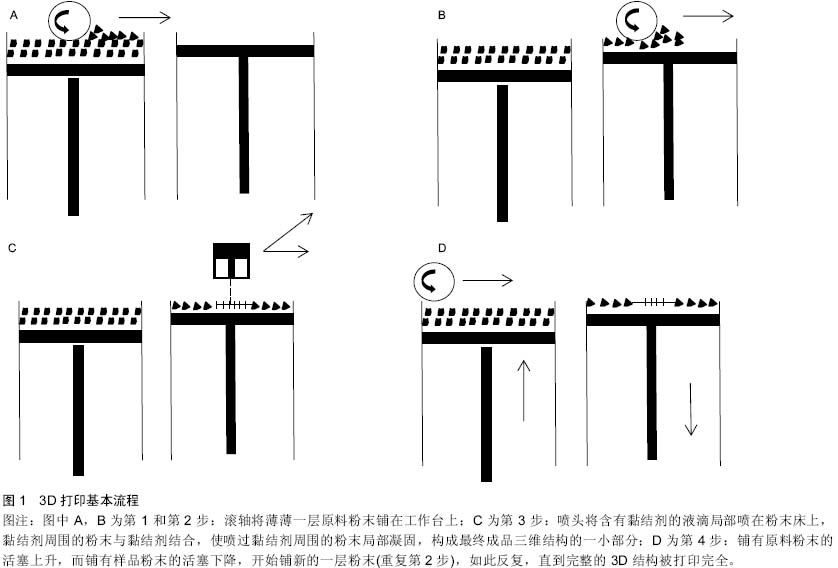| [1] Mourino V, Boccaccini A R. Bone tissue engineering therapeutics: controlled drug delivery in three-dimensional scaffolds. J R Soc Interface. 2010;7(43):209-227.
[2] Gao G, Schilling AF, Yonezawa T, et al. Bioactive nanoparticles stimulate bone tissue formation in bioprinted three-dimensional scaffold and human mesenchymal stem cells. Biotechnol J. 2014;9(10):1304-1311.
[3] 胡金龙,王静成,颜连启.组织工程学技术治疗骨缺损的最新研究进展[J].中国矫形外科杂志,2013,(2):150-153.
[4] Wang Q, Wang Q, Wan C. Preparation and evaluation of a biomimetic scaffold with porosity gradients in vitro. An Acad Bras Cienc. 2012;84(1):9-16.
[5] 毛恩亮,戴红莲,雷军,等.热致相分离/粒子滤出法制备多孔支架的研究[J].武汉理工大学学报,2010,(12):15-18.
[6] Guarino V, Ambrosio L. Temperature-driven processing techniques for manufacturing fully interconnected porous scaffolds in bone tissue engineering. Proc Inst Mech Eng H. 2010;224(12):1389-1400.
[7] Jang JH, Castano O, Kim HW. Electrospun materials as potential platforms for bone tissue engineering. Adv Drug Deliv Rev. 2009;61(12):1065-1083.
[8] Velasco MA, Narvaez-Tovar C A, Garzon-Alvarado D A. Design, Materials, and Mechanobiology of Biodegradable Scaffolds for Bone Tissue Engineering. Biomed Res Int. 2015;2015:729076.
[9] Lee M, Wu BM. Recent advances in 3D printing of tissue engineering scaffolds. Methods Mol Biol. 2012;868: 257- 267.
[10] Panetta NJ, Gupta DM, Longaker MT. Bone regeneration and repair. Curr Stem Cell Res Ther. 2010;5(2):122-128.
[11] Brydone AS, Meek D, Maclaine S. Bone grafting, orthopaedic biomaterials, and the clinical need for bone engineering. Proc Inst Mech Eng H. 2010;224(12):1329-1343.
[12] Will J, Melcher R, Treul C, et al. Porous ceramic bone scaffolds for vascularized bone tissue regeneration. J Mater Sci Mater Med. 2008;19(8):2781-2790.
[13] 石静,钟玉敏.组织工程中3D生物打印技术的应用[J].中国组织工程研究,2014,(2):271-276.
[14] Butscher A, Bohner M, Hofmann S, et al. Structural and material approaches to bone tissue engineering in powder-based three-dimensional printing. Acta Biomater. 2011;7(3):907-920.
[15] Sachs E, Cima M, Cornie J, et al. Three-Dimensional printing: the physics and implications of additive manufacturing. CIRP Ann. 1993;42(1):257-260.
[16] Lazghab M, Saleh K, Pezron I, et al. Wettability assessment of finely divided solids. Powder Tech. 2005; 157(1-3):79-91.
[17] Chau TT. A review of techniques for measurement of contact angles and their applicability on mineral surfaces. Minerals Eng. 2009;22(3):213-219.
[18] Khalyfa A, Vogt S, Weisser J, et al. Development of a new calcium phosphate powder-binder system for the 3D printing of patient specific implants. J Mater Sci Mater Med. 2007; 18(5):909-916.
[19] Yeong WY, Chua CK, Leong KF, et al. Rapid prototyping in tissue engineering: challenges and potential. Trends Biotechnol. 2004;22(12):643-652.
[20] Vacanti CA, Upton J. Tissue-engineered morphogenesis of cartilage and bone by means of cell transplantation using synthetic biodegradable polymer matrices. Clin Plast Surg. 1994;21(3):445-462.
[21] Sherwood JK, Riley SL, Palazzolo R, et al. A three-dimensional osteochondral composite scaffold for articular cartilage repair. Biomaterials. 2002;23(24): 4739- 4751.
[22] Tay BY, Zhang SX, Myint MH, et al. Processing of polycaprolactone porous structure for scaffold development . J Mater Proc Tech. 2007;182(1-3):117-121.
[23] Kim S S, Sun P M, Jeon O, et al. Poly(lactide-co-glycolide)/ hydroxyapatite composite scaffolds for bone tissue engineering. Biomaterials. 2006;27(8):1399-1409.
[24] Tagil M. Bone Substitutes, Grafts and Cement. Distal Radius Fractures. 2014.
[25] Bohner M, Galea L, Doebelin N. Calcium phosphate bone graft substitutes: failures and hopes. J Eur Ceramic Soc. 2012; 32(11):2663-2671.
[26] 袁景,甄平,赵红斌.高性能多孔β-磷酸三钙骨组织工程支架的3D打印[J].中国组织工程研究,2014(43):6914-6921.
[27] Zhou Z, Buchanan F, Mitchell C, et al. Printability of calcium phosphate: calcium sulfate powders for the application of tissue engineered bone scaffolds using the 3D printing technique. Mater Sci Eng C Mater Biol Appl. 2014;38:1-10.
[28] Fierz FC, Beckmann F, Huser M, et al. The morphology of anisotropic 3D-printed hydroxyapatite scaffolds. Biomaterials. 2008;29(28):3799-3806.
[29] Jun SH, Lee EJ, Jang TS, et al. Bone morphogenic protein-2 (BMP-2) loaded hybrid coating on porous hydroxyapatite scaffolds for bone tissue engineering. J Mater Sci Mater Med. 2013;24(3):773-782.
[30] Kim S, Seong K, Kim O, et al. Polyoxalate nanoparticles as a biodegradable and biocompatible drug delivery vehicle. Biomacromolecules. 2010;11(3):555-560.
[31] Gbureck U, Holzel T, Biermann I, et al. Preparation of tricalcium phosphate/calcium pyrophosphate structures via rapid prototyping. J Mater Sci Mater Med. 2008;19(4):1559- 1563.
[32] Hieu LC, Bohez E, Vander SJ, et al. Design and manufacturing of cranioplasty implants by 3-axis cnc milling. Technol Health Care. 2002;10(5):413-423.
[33] 魏学磊,董福慧.计算机辅助成型技术制备骨组织工程支架的研究进展[J].中国修复重建外科杂志,2011(12):1508-1512. |

